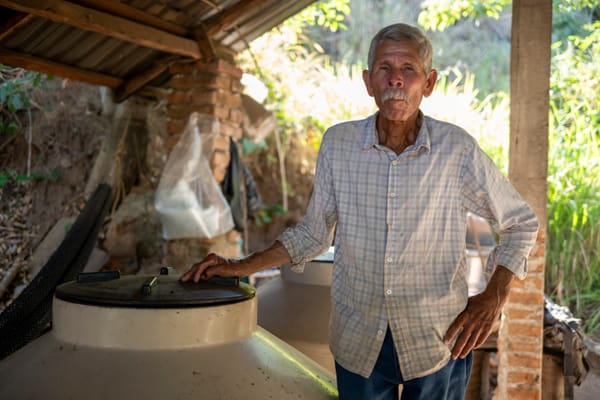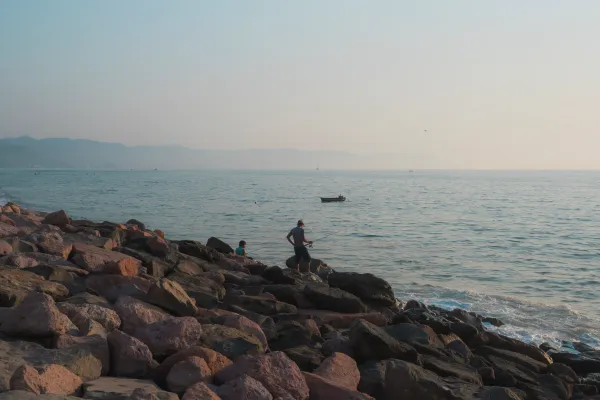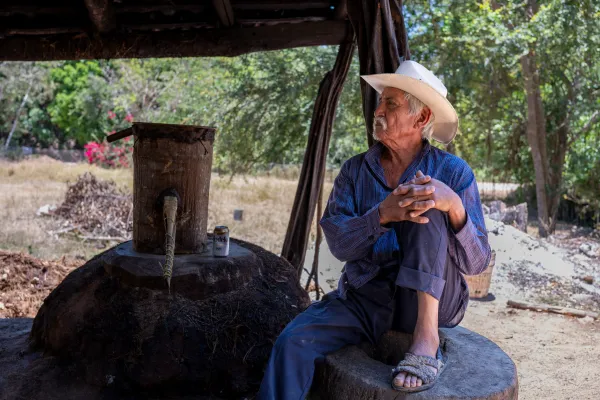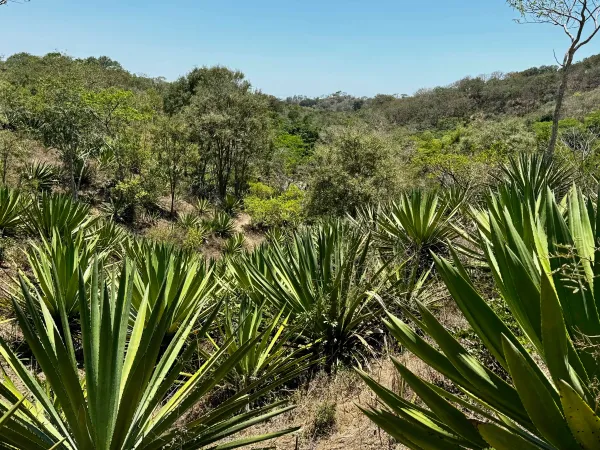What exactly is brennivín? This Icelandic spirit is full of history
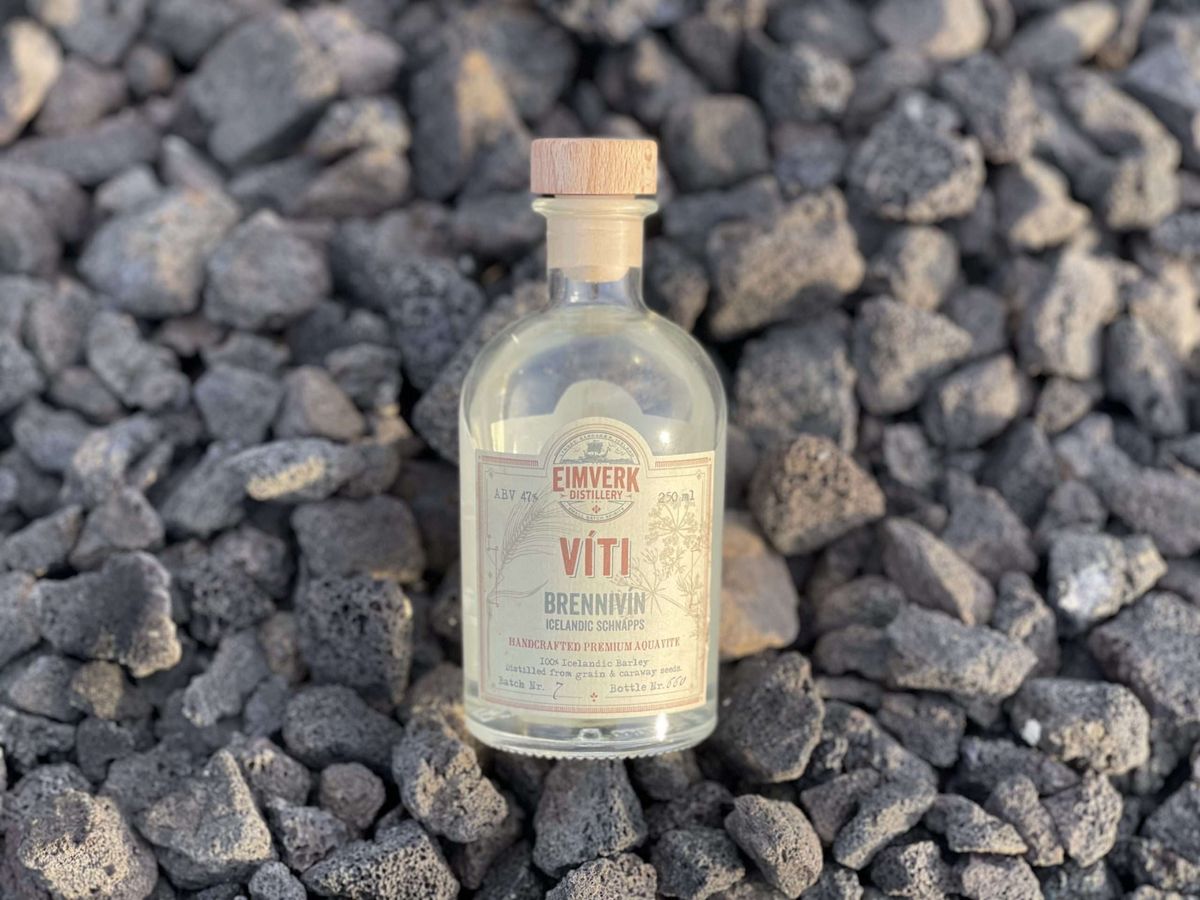
The waitress comes up to the table, looks at my friends and me, and said, “you need a shot.” Without really giving us an option, she asks if we want to see the bottle before or after. I know myself; if I know what I’m about to drink, I’ll contemplate it a bit too much before taking it. So, we say skål and throwback the clear, menacing liquor that sits before us. It was brennivín.
When researching a trip to Iceland, I came across an Icelandic liquor called brennivín. Similar to a type of aquavit, brennivín is the national (or at least it should be) drink of Icelanders. A clear liquor spiced predominantly with caraway, this drink goes down surprisingly easy for its high alcohol content.
Naturally, I had to find it.
History of brennivín in Iceland
To understand brennivín, you need to dig into a bit of Icelandic history. On my most recent trip to Iceland, I managed to sit down and talk to Eva-Maria, the distillery manager of Eimverk Distillery, who provided some fantastic historical context.
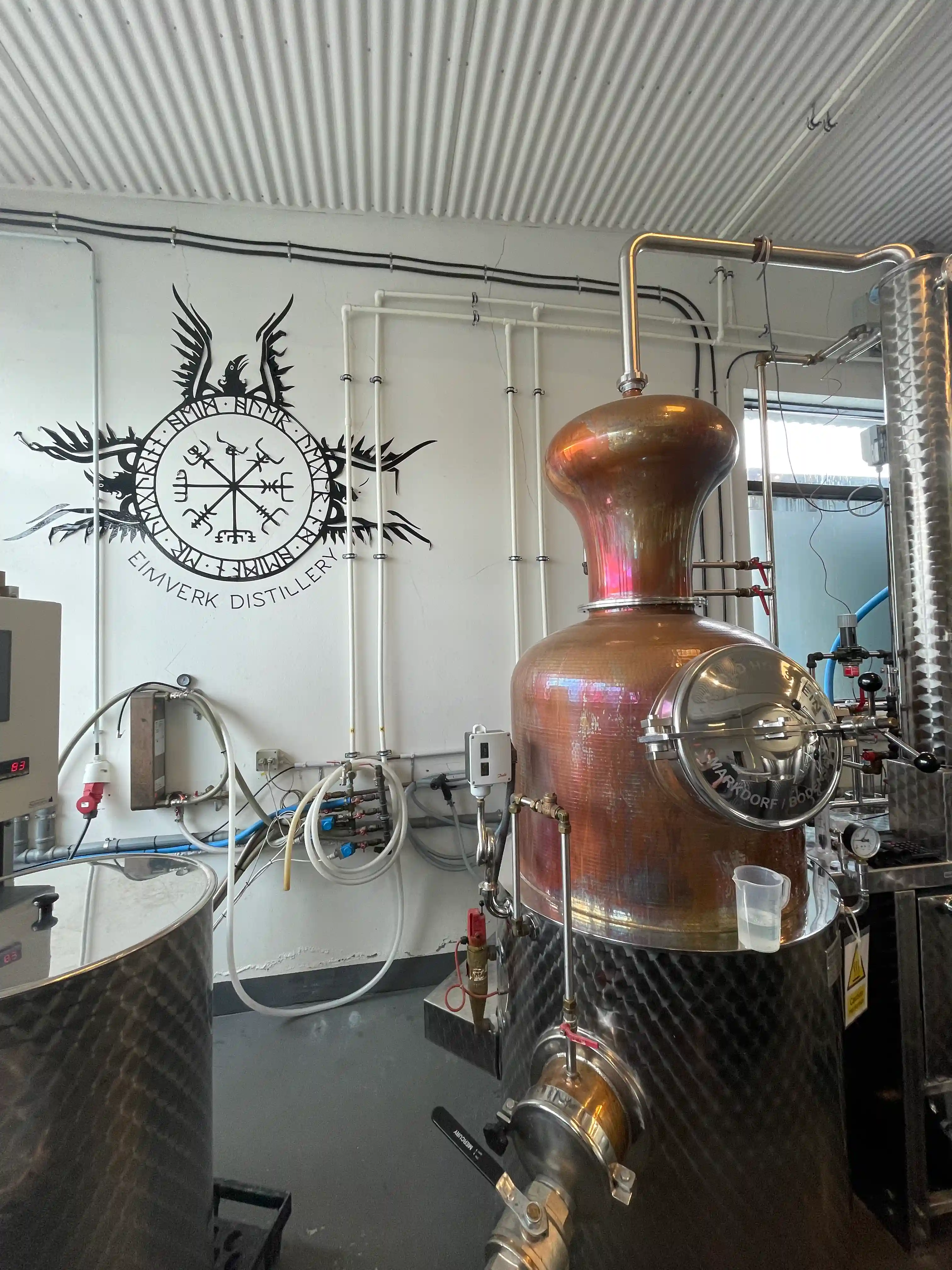
According to Eva, when the Vikings came over to Iceland, they were able to grow barley. However, around the 1200s, during the Age of the Sturlungs (basically a Viking civil war), the temperature dropped around 2-3 degrees. This meant that growing conditions became increasingly harsh, so barley production started to diminish.
That said, the making of beer was still highly valued:
“We know that women were, you know, smart and knew how to make good beer. They were looked at better as wife material.”Eva-Maria, Eimverk Distillery
But Iceland had one thing that not many other places in the world had at this point in time: clean water. In many parts of the world, brewing beer was actually more of a necessity than a pleasure. When making beer, water is boiled, and hops, which have antimicrobial properties, are added. Throughout this process, water is effectively sanitized and made safe for human consumption.
In Iceland, clean water is bountiful. The lava rock and moss act as a natural filtration device, letting water collect in underground reservoirs. So though beer production was desired, it wasn’t a necessity like it was in many other places in the world:
“There was one thing we never considered, there is clean water everywhere in Iceland. So the necessity of brewing the beer wasn’t as big in Iceland as somewhere else. You didn’t need to brew beer to be safe. You just drank the water.”Eva-Maria, Eimverk Distillery
Fast forward to the 1500s, foreign traders started coming to Iceland for its lush fishing waters. What they could offer in return for fish was booze. So wine and hard alcohol started making their way to Iceland.
It’s important to note that Iceland is a small market. So they aren’t getting the good wine and booze through trade; they got the cheap stuff. So it was almost necessary to flavor the alcohol with readily available spices like caraway, dill, and cumin to make the hooch more palatable.
“if you read the old cookbooks, women were actually taught how to season the spirit. So it would taste good. That is part of where brennivín comes from.”Eva-Maria, Eimverk Distillery
During this time, most Icelanders lived on farms in the countryside, not the seaside. Iceland was under Danish law, which required each person to be associated with a farm:
“You had to be signed to a farm if you didn’t own your own land or rent land. You had to work on a farm for someone else.”Eva-Maria, Eimverk Distillery
Around the 1850s, this starts to change.
As the fishing industry became increasingly valuable in international trade markets, people began migrating to the coast. As people start migrating to the coast and to the fishing industry, life began to change.
On a farm, the animal and crops control your daily cycle. With fishing, often the weather determines your daily activities. When inclement weather hits, it means you can’t go out to fish, so instead, you get free time. Around this time, the Industrial Revolution is also in full force, sending manufacturing and machinery to farms, making production more manageable, and opening the way for even more leisure time.
At this point, you get a pretty similar story to the United States, prohibition. Christianity, particularly Protestants, brought a structure to society that had newly found leisure time. So sadly, no more booze.
But this pissed off a few countries, particularly trade partners. At this time, Spain, a significant trade partner, typically paid the Nordic countries in wine and strong liquor. And with prohibition curtailing those imports, trade relations were strained:
“Three years into prohibition, the Spanish went like, ‘we’re not going to buy this whole fish anymore. If we can’t pay you in red wine, white wine import’. Within five years from prohibition, we had allowed red wine, white wine, and strong liquor back. And that has a lot to do with how Icelandic then proceeded to drink. Beer was still banned until 1989.”Eva-Maria, Eimverk Distillery
Eventually, beer was legalized, but by that time, brennivín was ingrained in Icelandic history.
Today, several Icelandic distilleries produce their own brennivín, even adding their own twists to the classic spirit. One company, in particular, Halogi Distillery, has a range of brennivín made from ingredients like seaweed, dill, blueberries, and angelica root. This craft approach to brennivín is bringing the liquor to the center of the drinking culture.
Brennivín had a brief moment in the United States spotlight as well. The Foo Fighters song, “Skin and Bones” prominently mentions Brennivín:
“All worn out and nothing fits, Brennivín and cigarettes,
The more I give the less I get, But I’m all set”Foo Fighters
And Dave Grohl has been seen in a brennivín t-shirt on occasion. I’m not sure if this makes it hipster or mainstream, but whatever the case, brennivín has started making its way into bars across the world.
Why is brennivín called the “black death”?
When prohibition was lifted in 1935, Iceland created a state-run alcohol monopoly (ÁTVR), producing its own brennivín. The brennivín was packaged in a green bottle with a minimalistic black label to make the liquor less appealing.
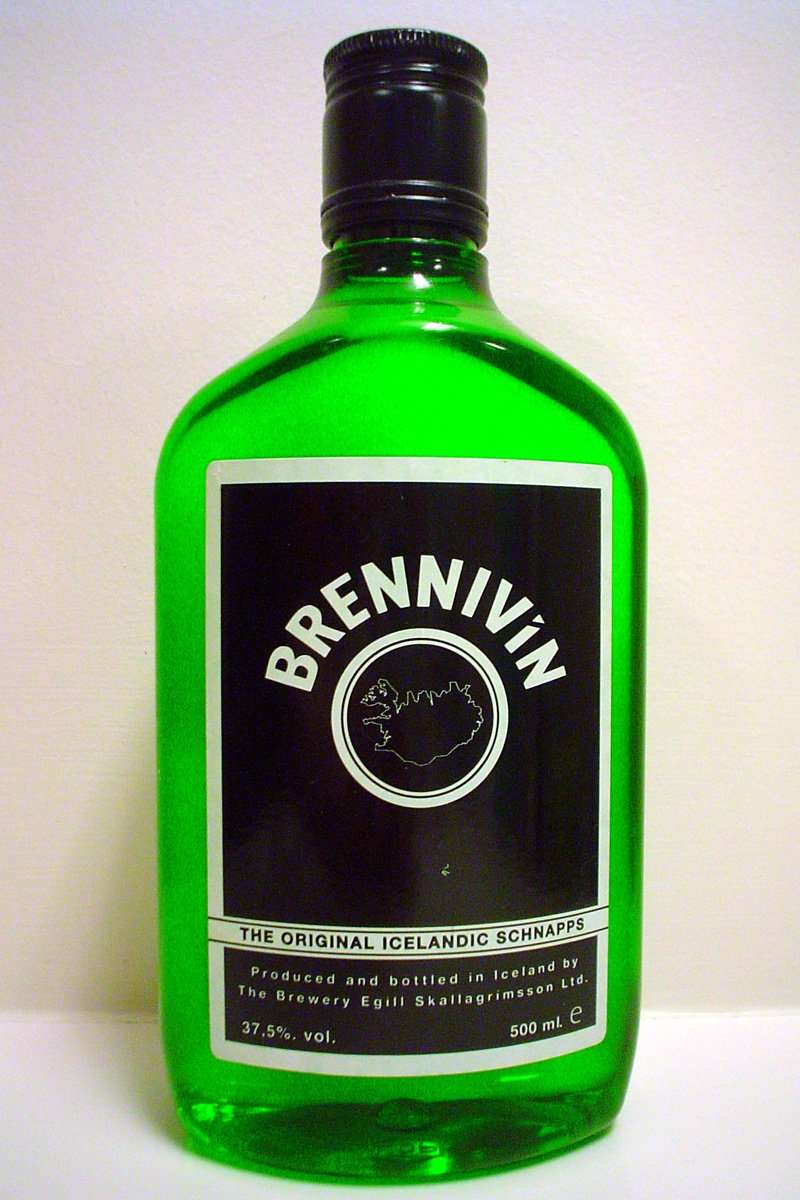
Combine a black label and a little overindulging, and you get the “black death.”
Brennivín vs. aquavit
At this point, you might be asking yourself what exactly is the difference between aquavit and brennivín. And it’s true, there aren’t too many differences between the two, outside of the historical context. That said, the dominant flavor of aquavit or brennivín will depend on where it is produced.
Icelandic brennivín has caraway as the dominant flavor. In Sweden, aquavit is made from predominantly dill. The Danes prefer a mixture of dill and caraway. While Norwegians will even barrel age their aquavit, giving it a darker amber color.
How to drink brennivín
Traditionally you drink brennivín straight up or neat. It pairs pretty well with fermented foods like the famous hákarl (fermented shark) or even pickled herring. But as it’s gotten a bit more popular and new flavors introduced, bartenders are starting to get a bit more creative by using it in some cocktails.
brennivín has also been used in more, uh, creative ways. For example, after prohibition but before beer was officially legalized, you could still find low alcohol percentage beer, under 2.5% ABV, sold in grocery stores. So resourceful bartenders would use brennivín to raise the alcohol percentage of the “beer,” effectively making it an Icelandic boilermaker.
Your mileage may vary, but I’m a sucker for traditions, so I recommend drinking it alongside some fermented food.
—
The same waitress that gave us the shot of brennivín also gave us a bit of a backstory of it. She said that, back in the day, brennivín was what Icelanders used to keep warm in the winter. It was a necessity.
A few days later, I asked another bartender if this was true. He said, “Nah, we just like getting drunk.”
I guess every story has both romantic and pragmatic adaptations.

